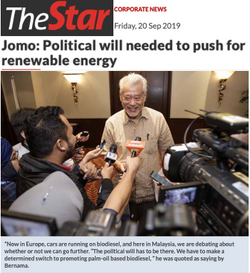- Aug 12, 2025
- 4 min read
KUALA LUMPUR, Malaysia, Aug 12 2025 (IPS) - The accumulation of still growing greenhouse gas emissions (GHG) in an increasingly unequal world is accelerating planetary heating. It is also worsening disparities, especially between the rich and others, both nationally and internationally.
Unequal emissions
In our grossly unequal world, international disparities account for two-thirds of overall income inequalities. National income aggregates and averages can mislead by obscuring significant disparities within countries.
The World Inequality Report argues that GHG emission disparities are mainly due to inequalities within countries. Meanwhile, GHG emissions continue to grow as their accumulation accelerates planetary heating.
Emissions disparities within nations now account for almost two-thirds of worldwide emissions inequality, nearly doubling from slightly over a third in 1990.
The bottom halves of rich country populations are already at – or close to – the 2030 per capita carbon dioxide equivalent emission targets set by their governments. Yet North America’s wealthiest 10% or decile are the world’s biggest GHG emitters.
Their average emissions are 73 times those of the bottom half of the South and Southeast Asian populations! The East Asian rich also emit high GHGs, but much less than in North America.
The bottom halves of their populations emit nearly ten tons per capita yearly in North America, around five tons in
Europe, and about three tons in East Asia.
The much smaller carbon footprints of most of the Global South contrast with the GHG emissions of the top deciles in their own countries and those of the wealthiest 10% in poorer regions.
The top deciles in South and Southeast Asia emit more than double the GHG emissions of Europe’s lower half. Even sub-Saharan Africa’s top decile emits more than Europe’s lower half on average.
Inequality drives emissions
Jayati Ghosh, Shouvik Chakraborty and Debamanyu Das argue that inequality has been driving increases in GHG emissions. While the bottom halves in the US and Europe reduced per capita emissions by 15-20% between 1990 and 2019, the top 1% increased theirs.
The world’s top decile alone accounts for almost half of GHG emissions. As the wealthy become even richer, their adverse environmental impacts increase.
Despite misleading rhetoric, most carbon taxation is not progressive, typically burdening middle- and low-income groups much more than those most responsible, the rich.
Policies to cut GHG emissions must curb excessive consumption by the rich as well as ‘extractivist’ production worldwide to meet their demands.
Profits trump public interest
Meanwhile, transnational corporations and Western governments have refused to honour the public health exception (PHE) to the World Trade Organization (WTO) intellectual property (IP) rights agreement, TRIPS.
The PHE compromise was agreed to in 2001 to resume WTO trade negotiations at its Doha inter-ministerial meeting after the aborted Seattle conference in 1999.
But then, rich nation governments blocked developing countries’ requests for a PHE waiver to urgently produce enough affordable tests, treatments, equipment and vaccines for the duration of the COVID-19 pandemic.
Hence, it is unlikely significant IP concessions will be forthcoming to boost developing countries’ efforts to mitigate and adapt to effectively address planetary heating.
The sources of global warming are local, while planetary heating is worldwide, albeit uneven. Effective coping policies and measures are costly and generally more burdensome to the poor and middle classes.
Alternative arrangements can enable greater equity and sustainability. However, mobilising more concerted and effective resistance to planetary heating has proved very difficult.
Climate injustice
Historical accumulation of GHG emissions is the leading cause of planetary warming. Developed countries were responsible for almost four-fifths of cumulative GHG emissions from 1850 to 2011.
Meanwhile, their adverse impacts on developing countries in the tropics are worse. The Global South is also less able to cope due to limited policy space and means.
‘Net-zero’ commitments by countries do not acknowledge the huge climate burden imposed by past GHG accumulation, thus undermining prospects for a just transition.
In international negotiations, wealthy economies have evaded historical responsibility for ‘climate debt’ by focusing on contemporary emissions and ignoring their accumulation over the last two centuries.
Ignoring this historical climate debt also serves to legitimise ignoring compensation for those most adversely impacted in low- and lower-middle-income countries, who have already suffered extensive damage and losses.
This pretence is not only unfair, but also counterproductive. It has undermined the international solidarity and cooperation needed to cope with planetary heating.
Breaching threshold
Current rich nations’ projected emissions will use up three-fifths of the remaining global warming threshold for the world’s ‘carbon budget’ until 2050, so as not to exceed the 1.5°C addition to pre-industrial levels!
However, the most optimistic recent Intergovernmental Panel on Climate Change (IPCC) scenario expected the 1.5°C threshold to be crossed by 2040!
But even before US President Trump re-accelerated planetary heating after his re-election, then UN Special Envoy and now Canadian Prime Minister Mark Carney warned this threshold would be breached by the end of this decade!
Related IPS Articles:
Available online at: Inequality Worsens Planetary Heating





















